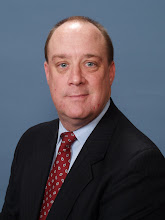Man
indicted in
fraud case
posted September 10, 2009
Total Loss: $100,000
John Dennis Sedersten, 33, joined Max R. Snodgrass, 31, Bryan Thomas Ray, 32, and Karen Ann Harris, 45, as a defendant in the 25-count indictment. From April to November 2008, the defendants used stolen checking account and personal identity information to produce counterfeit identification documents and checks, federal prosecutors said.
Source:
News-Leader
http://www.news-leader.com/article/20090910/NEWS01/909100309/1007/NEWS01/Alleged-beating-victim-indicted-in-fraud-case
Md. man guilty of fraud with dead neighbor’s name
posted September 10, 2009
Total Loss: $95,000
A Fallston man has pleaded guilty to bank fraud charges for using his dead neighbor’s identity to get credit accounts. Fifty-six-year-old Jerome Malecki’s plea entered Wednesday said he and David Johnson stole about $95,000 in Social Security and state pension payments meant for his neighbor. The neighbor’s July 2004 death wasn’t reported and federal prosecutors said Malecki continued the scheme until November 2007.
Source:
Washington Examiner
http://www.washingtonexaminer.com/local/ap/58150997.html
Man Pleads Guilty in Wal-Mart Card Phishing Scheme
posted September 10, 2009
Total Loss: $193,000
A
Sacramento, California, man has pleaded guilty to charges for his role in an international scam that netted sensitive information on tens of thousands of Internet users and then used that data to open fraudulent Wal-Mart
credit cards. Tien “Tim” Truong Nguyen pleaded guilty to fraud and
identity theft charges on Tuesday, the day before his case was set to go to trial.Prosecutors say that, working in concert with Romanian cyber-criminals, Nguyen set up fake phishing Web sites and supplied others with stolen information that was then used to set up fake Wal-Mart instant credit accounts in stores throughout northern California.By setting up hundreds of these instant credit lines, Nguyen’s two alleged co-conspirators, Stefani Ruland and Ryan Price, netted close to $193,000 in just under two months, prosecutors say.
Tags:
Wal-Mart, GE Capital
Source:
PC World
http://www.pcworld.com/businesscenter/article/171683/man_pleads_guilty_in_walmart_card_phishing_scheme.html
Local man sentenced for loan fraud
posted September 09, 2009
Total Loss: $340,000
A Huntington-area man convicted of student loan fraud will spend one year and six months behind bars and pay $344,908 in restitution. Stephen Phillips, 38, was sentenced Aug. 27, by
U.S. District Judge William W. Caldwell in Harrisburg, Pa. Phillips had pleaded guilty to the federal charge in May. A U.S. Attorney’s Office press release states the conviction arose out of a scheme in which Phillips allegedly used the identities of innocent third parties to apply for more than $340,000 in federal educational benefits.
Source:
Herald Dispatch
http://www.herald-dispatch.com/news/briefs/x1408881239/Local-man-sentenced-for-loan-fraud
check
over 100k
Bad check leads to fraud probe
posted September 09, 2009
Total Loss: $100,000
Police launched an investigation into a possible investment fraud scheme involving several victims and at least $100,000 after a 21-year-old British national was arrested Monday for passing a fraudulent check.Adam Al-Muhanna was arrested Monday, at the University of Redlands after he allegedly wrote a check to a former student there for $100,000 on a closed
CitiBank account. Police say Al-Muhanna also wrote several other checks connected to bank accounts that were either closed or contained insufficient funds. At least three people say they gave money in amounts ranging from $2,000 to $65,000 to Al-Muhanna to invest and never received a return despite repeated requests for their money, according to Redlands city spokesman Carl Baker.
Tags:
Citibank
Source:
Redlands Daily Facts
http://www.redlandsdailyfacts.com/news/ci_13294132
FBI is cracking bank fraud ring
posted September 07, 2009
Total Loss: $44 million
The FBI is investigating a fraud ring accused of bilking several banks and customers — including San Antonio-based USAA and the former chief of staff of U.S. Sen.
Strom Thurmond — out of at least $44 million. One person is in custody in San Antonio and agents are looking for a Nigerian man from Dallas featured on the television show “America’s Most Wanted.” The suspects are believed to have posed as customers to fraudulently withdraw money from bank accounts, including one at USAA that was tapped for $98,000.
Tags:
USAA, Citibank, Woodforest Bank
Source:
San Antonio Express Newshttp://www.mysanantonio.com/news/local_news/FBI_is_cracking_bank_fraud_ring.html
collusive network
credit card
over 500k
11 charged in alleged credit card fraud scheme
posted September 07, 2009
Total Loss: $650,000
Federal authorities have charged 11 people with fraud in an alleged scheme that involved creating counterfeit credit cards and using them to withdraw cash. The U.S. Attorney’s Office says the individuals charged withdrew more than $650,000 from ATMs between July 2008 through April 2009. All 11 of the suspects are from northwestern Twin Cities suburbs.According to court documents, the suspects used counterfeit credit cards to make unauthorized withdrawals, defrauding Capital One Bank. Authorities say they also used the counterfeit cards to get cash advances.
Tags:
Capital One
Source:
WQOW18
http://www.wqow.com/Global/story.asp?S=11087162




